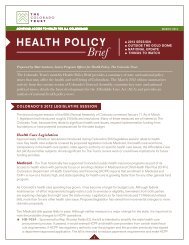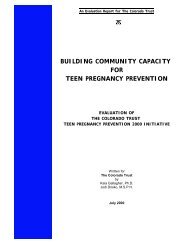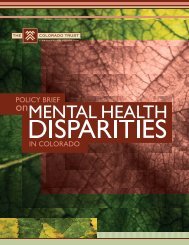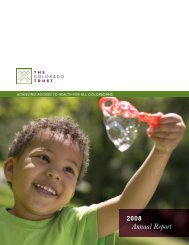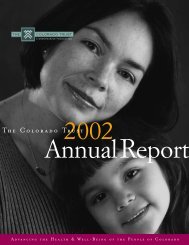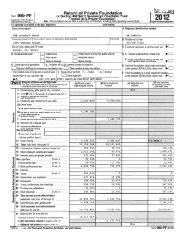After-School Initiative's Toolkit for Evaluating
After-School Initiative's Toolkit for Evaluating
After-School Initiative's Toolkit for Evaluating
Create successful ePaper yourself
Turn your PDF publications into a flip-book with our unique Google optimized e-Paper software.
Using This <strong>Toolkit</strong><br />
As part of their evaluation technical assistance to ASI grantees, NRC provides an evaluation liaison <strong>for</strong> each ASI program. The evaluation<br />
liaison serves as a consultant to guide and assist program staff to develop a program logic model, identify the program’s youth development<br />
outcomes, develop a survey and survey administration protocol, and understand and use the results of the survey.<br />
With their evaluation liaison, staff at each after-school program should review the outcome domains and question sets provided in this<br />
toolkit and determine whether they are applicable to their program. In addition, staff should consider whether the question sets reflect the<br />
youth development outcomes that individual programs are working toward according to their logic model. Once outcome domains and<br />
question sets are chosen, NRC, through the evaluation liaisons’ communication with ASI programs, will customize surveys <strong>for</strong> programs<br />
electronically. Liaisons will help ASI programs determine the most appropriate dates <strong>for</strong> survey administration and develop protocol <strong>for</strong><br />
administration. Then, after program staff administers the surveys to their youth participants, completed surveys will be sent to NRC <strong>for</strong><br />
analysis. Finally, within a few months of administration, evaluation liaisons will meet with their assigned ASI programs to review the data<br />
results and discuss ways of using their data <strong>for</strong> program improvement.<br />
Recruitment, Incentives and Consent<br />
Determine who should be recruited to complete the survey: Every youth in fourth through ninth grades participating in after-school<br />
programs funded by ASI is eligible to be a survey respondent. Whenever possible, all eligible participants should be asked to complete the<br />
survey. If resources permit, it is easier to survey all participants to avoid designing special data collection methods that survey only a<br />
representative sample of participants. If resources do not permit, the evaluation liaison should help program staff determine a sampling<br />
method. Appendix II provides instructions <strong>for</strong> developing a sampling scheme <strong>for</strong> those programs unable to survey all participants.<br />
Decide if incentives will be offered: Program staff needs to decide if incentives will be offered as part of the survey administration<br />
process. Appendix III provides more in<strong>for</strong>mation on the use of incentives to increase participation in evaluation.<br />
Obtain consent and assent <strong>for</strong> the evaluation: The consent and assent <strong>for</strong>ms are designed to protect evaluation participants by<br />
in<strong>for</strong>ming them of their rights as well as any risks and benefits that may occur as a result of participation in the evaluation. Participants<br />
must understand what the evaluation is about and what they are being asked to do. Program staff is required to have a signed current<br />
consent and assent <strong>for</strong>m on file <strong>for</strong> each participant in the evaluation.<br />
Be<strong>for</strong>e an ASI program collects data from youth – even if it is anonymous – program staff must have a consent <strong>for</strong>m signed by a parent or<br />
guardian of each youth on file. The consent <strong>for</strong>m is intended to describe the risks and benefits of participation in the evaluation and to give<br />
<strong>Toolkit</strong> <strong>for</strong> <strong>Evaluating</strong> Positive Youth Development 5



